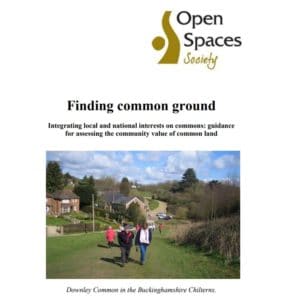Commons: An Introduction to ‘Finding Common Ground’
In 2010 Natural England commissioned the society to write a guide to taking account of the public interest in the management of commons. Although this was written some years ago, the principles hold good and it remains relevant and useful for all who are involved in commons management. Click here to read the full report from 2010 with minor revisions made in 2013.
Commons are unique. People value them for all sorts of reasons. There is no other type of land in which so much public interest is concentrated. This is why commons must be treated with respect and understanding.
A staggering number and many thousands of hectares of commons are designated as national or international sites, for their wildlife, landscape or archaeological interest—and nearly all are available for public access by right. The designations bring with them targets and guidance on how to achieve them. There are no such formal checklists for local people and local interests, yet their interest in commons is just as important.

Consequently, under pressure to get things done and to meet funding deadlines, there is a danger that the community’s interests will be overlooked. This guidance explains how the values which local people place on commons can be identified and integrated with national and international criteria.
Plans for grazing, for scrub-clearance and tree-felling, for instance, can all meet opposition unless the community is involved in their making. Fencing, which may be desirable to enable the common to be grazed, is a physical and a psychological barrier. It can change the nature of the common, is often highly controversial and should be a last resort.
It is best that it is tested, with pilot plots to see if it will have the desired effect; it can be mitigated by sensitive siting or removal of barbed wire. Plentiful access-points are essential.
This guidance shows, through case studies, how to identify the people who care about a particular common, and how to involve them in plans for its future. We make it clear that you should not undertake works on a common lightly. You must take time to understand why the community values its common and how to accommodate everyone’s wishes. If you persevere and win agreement, the common will be sustained—a joy for ever.
Click here to read the full report from 2010 with minor revisions made in 2013.
Receive the latest news to your inbox
Sign up to our monthly eZine to stay up to date with news, views, and more from the Open Spaces Society. Signing up takes less than two minutes.
